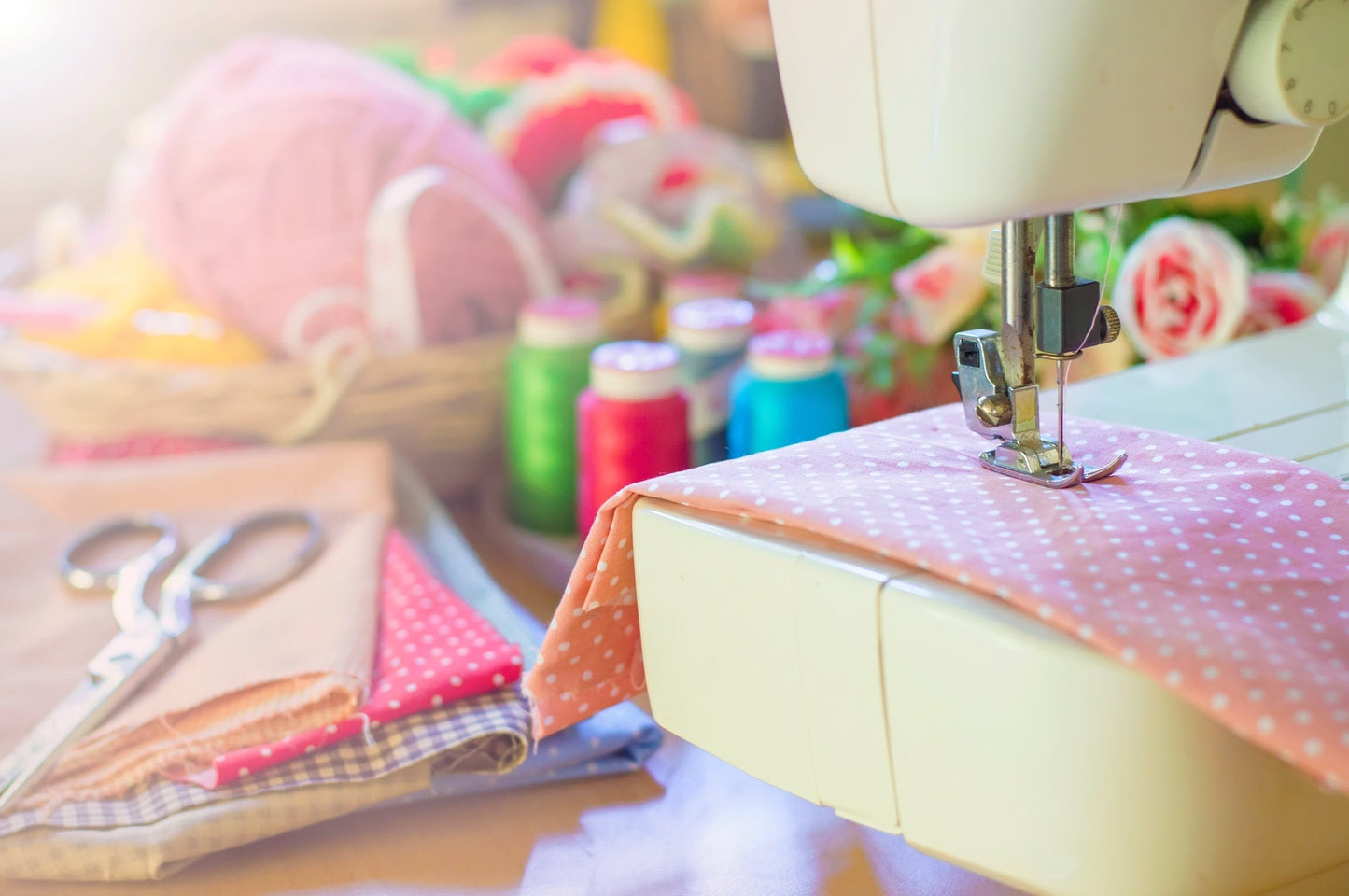
In order to get busy sewing, you need a sewing room that you love to work in! Use these sewing room ideas to create the best sewing room.

The garment production industry in Australia employs about 37,000 people, and many more simply enjoy sewing at home.
If you do a lot of sewing, you might have a room dedicated to it. For a lot of people, however, this space is cluttered and disorganized, so it's hard to get things done. It's worth taking the time to make some improvements as it will give you an area that's perfect for all your sewing needs.
In this guide, we'll go over five sewing room ideas to help you create the perfect space. Keep reading for more.
1. Think About the Work Surfaces
The work surfaces are one of the most important elements of any sewing room. Even if you don't have a dedicated space and are just sewing in the corner of another room, the work surfaces will make a huge difference.
Having just a single surface can make things difficult. Realistically, there are three distinct workspaces that you should have.
The first (and most obvious) is a space for your sewing machine. This doesn't need to be perfect. As long as it can comfortably hold your sewing machine, it should be fine.
You'll also need an area for cutting, and depending on the workspace you have, this could be the same table as your sewing machine. If you have more flexibility, having a separate table is typically better. Ideally, this will be close to your sewing machine, but it's not a huge issue if it's a bit further away.
Another essential is an ironing space. If you have enough room, a large ironing board is ideal. If not, a small tray table can get the job done.
2. Create Organized Storage Spaces
This is something that's best done when you first set up a sewing room. If things are organized at the start, it will be easier to keep them that way. Despite that, it's always possible to make changes whenever you want, so you can create organized storage spaces down the line.
You can do this however you see fit. Things like boxes, drawers, baskets, and bins are all great options for smaller items. When it comes to fabrics, many people prefer shelves.
A bookcase, for example, will give you plenty of storage space, and it's easy to keep things organized. If your craft room is getting a bit hectic, you should take the time to sort everything out and make an effort to keep it organized.
Peg board storage and wall shelves can also be a welcome addition, to make the most of those blank walls and utilise every space.
3. Make Sure Everything You Need Is Easily Accessible
This goes hand in hand with organized storage spaces. You want to keep everything in a logical place, and you also want to be able to get whatever you need easily.
Think about the tools and fabrics that you use the most. You want these to be the easiest to get to. Items that you use more rarely can be stored on top shelves or tucked away.
This will make your day-to-day sewing much easier. Consider all of this when you're setting up your storage spaces.
It's worth noting that items on shelves will be clearly visible, while anything you put into containers, drawers, etc. won't be. As such, the items you're using the most are typically better kept on shelves as you'll be able to find them quickly. For many people, things like scissors, rotary cutters, fabric, threads, and pins are typical items that get a lot of use.
Whenever you're finished with something, make sure you put it back in the right place. If you don't, things could quickly get messy, and you'll just be making more work for yourself.
4. Implement a Labelling System
Organizing your sewing space is ideal, but it's very unlikely that you'll be able to remember where everything is kept. Labels can help with this problem.
For any boxes, drawers, containers, etc., you can make labels. This will make it much easier to find things quickly, and you'll be more likely to put things back in the right place when you're done with them.
If you have a more complicated sewing room, you could even make a master list. This will help you find anything in just seconds. It's worth noting that you probably won't need to label anything that's clearly visible.
5. Plan for Upgrades
An organized space is always better to work in. Whether it's something you designed that way from the start or you decided to organize things later on, you'll likely get used to the convenience of your sewing room. With that being said, it's important to look to the future.
You might find it beneficial to create an upkeep and editing schedule. Regular upkeep will make sure your sewing room stays organized and meets your needs.
When it comes to editing, this can include adding things you want and getting rid of things you no longer need. You might have older tools that you've replaced, so there's no point in holding onto ones you no longer use.
You can usually donate old items so that they don't go to waste. This will help you keep your sewing room organized, and you can make improvements that will make it a better space for you to work in.
Putting These Sewing Room Ideas Into Action
Depending on what you're trying to do, you can make use of some (or even all) of these sewing room ideas. They'll help you create a space that's well-organized and easy to work in at all times.
Kwaint Threads has a huge selection of fabrics, so if you're looking for any to add to your collection, we've got you covered. Take a look at our new arrivals page to see some of the latest fabrics we have available.
